If you click on a link and make a purchase we may receive a small commission. Read our editorial policy.
How to watch Star Trek in order: the shows, the movies, the cartoons (in chronological or release order)
Multiple shows, multiple movie franchises, multiple timelines? You'll need more than a tricorder to make sense of the Star Trek franchise
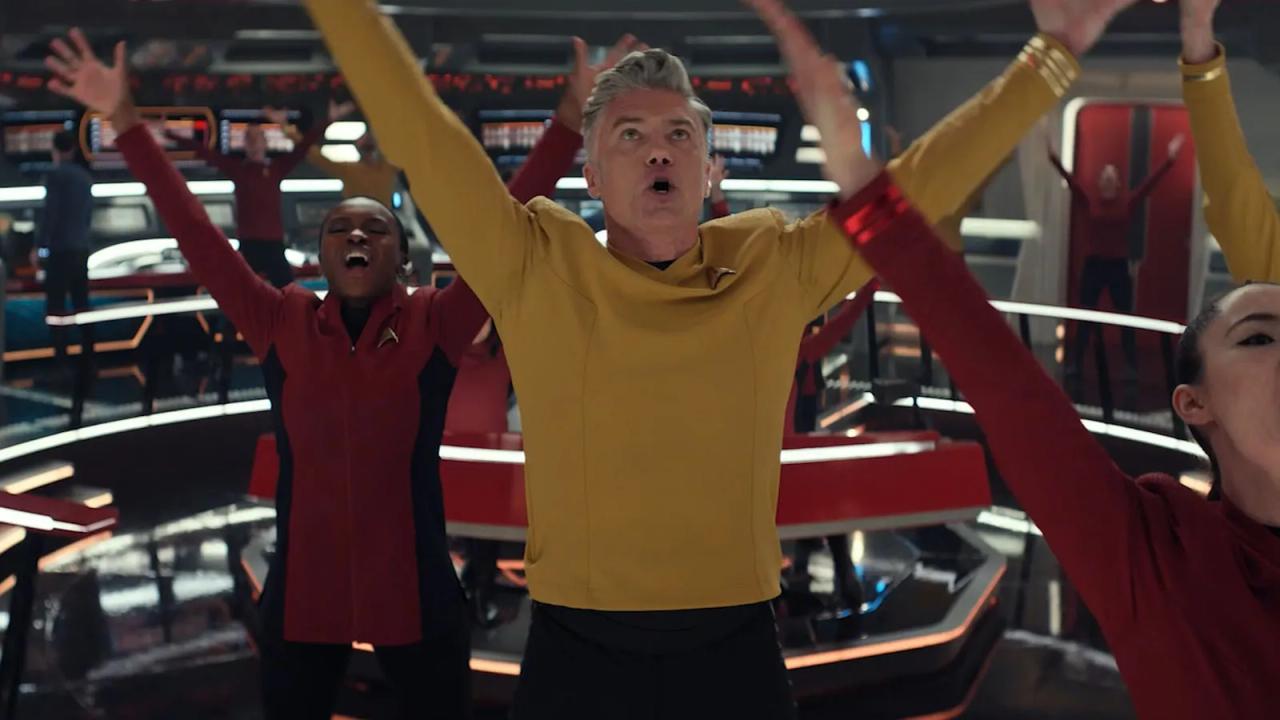
Popverse's top stories
- Welcome to 2026! Here's how Popverse will continue to be your pop culture tour guide & bestie
- How to watch Dimension 20 in order, from Fantasy High to Gladlands and everything in between
- After Stranger Things: The Duffer Bros. original plans for a sequel set in the 90s
"Computer, where do I start if I want to watch Star Trek?"
While that amazing LCARS computer and interface isn't yet a reality, we can provide the next best thing. Our Star Trek watch order will guide you through the twisting timelines and dozens of different shows and movies in the Star Trek franchise.. It helps that all of it is available streaming as part of a Paramount+ subscription.
With a narrative that spans seven decades and more than three times that many shows and movies, determining how to watch Star Trek in order might seem like a daunting prospect. The simple fact of the matter is, the best Trek starting point will likely depend on your own personal sensibilities.
But how to determine which Trek will match your sensibilities before you’re familiar with the franchise? This primer can help you determine where you want to Boldly Go first in the vast and ever-expanding Star Trek universe. Whether you’re interested in a show or movie, the prime Trek timeline of the Kelvin timeline, here’s how to watch Star Trek in order.
How to watch Star Trek in order - chronological order

Here’s how to watch Star Trek’s prime timeline in chronological order (and the years they stories approximately take place in):
- Star Trek: Enterprise (2151-2161)
- Star Trek: Discovery (2256-2258)
- Star Trek: Strange New Worlds (2259-)
- Star Trek: The Original Series (2265-2269)
- Star Trek: The Animated Series (2269-2270)
- Star Trek: The Motion Picture (2273)
- Star Trek II: The Wrath of Khan (2285)
- Star Trek III: The Search for Spock (2285)
- Star Trek IV: The Voyage Home (2286 (and significant time travel elements in 1986))
- Star Trek V: The Final Frontier (2287)
- Star Trek VI: The Undiscovered Country (2293)
- Star Trek: Section 31 (2335)
- Star Trek: The Next Generation (2364-2370)
- Star Trek: Deep Space Nine (2369-2375)
- Star Trek Generations (2371)
- Star Trek: Voyager (2371-2378)
- Star Trek: First Contact (2373)
- Star Trek: Insurrection (2375)
- Star Trek: Nemesis (2379)
- Star Trek: Lower Decks (2380-2381)
- Star Trek: Prodigy (2383)
- Star Trek: Picard (2399-2401)
- Star Trek: Discovery (3188-3191)
Wait, where is the J.J. Abrams Star Trek movie trilogy? That's part of a vastly different Star Trek timeline, the Kelvin timeline, which we'll get into in a bit.
Some notes on time travel: the majority of the Star Trek shows and several of the movies include time travel storylines that bring the characters outside of their time frame, including to dates in the 20th and 21st Century (before Enterprise). For the sake of clarity, these temporal outliers have been omitted from the above chronology.
Furthermore, because of the nature of the effect time travel has on the Trek timeline (see below), entries that appear earlier in the chronological order may be affected by those that appear later on. For example, the Enterprise season 2 episode 'Regeneration' flows from the events of Star Trek: First Contact.
The anthology series Star Trek: Short Treks is not included on this timeline, as it features episodes that take place throughout the Trek franchise timeline. However, it's worth noting that the climactic scenes of Prodigy season 2's finale take place contemporaneously with the Short Treks episode "Children of Mars." Meanwhile, Discovery's epilogue serves as a prologue for the Short Treks episode "Calypso."
Finally, note that, as can be seen above, Star Trek: VII – XI take place contemporaneously with part of the Deep Space Nine and Voyager timelines.
How to watch Star Trek in order - release order

Here’s how to watch the prime Trek timeline in release order:
- Star Trek: The Original Series (September 1966 – June 1969)
- Star Trek: The Animated Series (September 1973 – October 1974)
- Star Trek: The Motion Picture (December 1979)
- Star Trek II: The Wrath of Khan (June 1982)
- Star Trek III: The Search for Spock (June 1984)
- Star Trek IV: The Voyage Home (November 1986)
- Star Trek: The Next Generation (September 1987 – May 1994)
- Star Trek V: The Final Frontier (June 1989)
- Star Trek VI: The Undiscovered Country (December 1991)
- Star Trek: Deep Space Nine (Jan 1993 – June 1999)
- Star Trek Generations (November 1994)
- Star Trek: Voyager (January 1995 – May 2001)
- Star Trek: Enterprise (September 2001 – May 2005)
- Star Trek: First Contact (November 1996)
- Star Trek: Insurrection (December 1998)
- Star Trek: Nemesis (December 2002)
- Star Trek (May 2009)
- Star Trek Into Darkness (August 2013)
- Star Trek Beyond (July 2016)
- Star Trek: Discovery (September 2017 – 2024)
- Star Trek: Short Treks (October 2018 – January 2020)
- Star Trek: Picard (January 2020 – April 2023)
- Star Trek: Lower Decks (August 2020 – January 2025)
- Star Trek: Prodigy (October 2021 – July 2024)
- Star Trek: Strange New Worlds (May 2022 – ongoing)
- Star Trek: Section 31 (January 2025)
Where are the Star Trek movies and TV shows streaming?

You're in luck. While some of the movies and TV shows are available individually across various streaming platforms, all of the Star Trek TV shows and movies are also available centrally on the Paramount+ streaming service, with one exception. All 40 episodes of Prodigy seasons 1 and 2 are currently available for streaming on Netflix. However, Paramount+ is the home for every announced upcoming Star Trek TV show and movie (although that may change).
Understanding Star Trek and the Kelvin timeline

The Kelvin timeline is a parallel timeline created when Nero (Eric Bana) travels from 2387 to 2233, a date between the time frames of Enterprise and Discovery season 1. It is named for the Starfleet ship Nero destroys upon his arrival in the 23rd century, the USS Kelvin. In Prodigy, this event is called the Narada Incursion, after Nero's own ship rather than the one he destroys. The majority of the Kelvin timeline narrative takes place around the same time as TOS, but on an alternate timeline.
Here’s how to watch the three movies in the Kelvin timeline in both chronological and release order:
- Star Trek (May 2009)
- Star Trek Into Darkness (August 2013)
- Star Trek Beyond (July 2016)
How does time travel affect the Star Trek timeline?
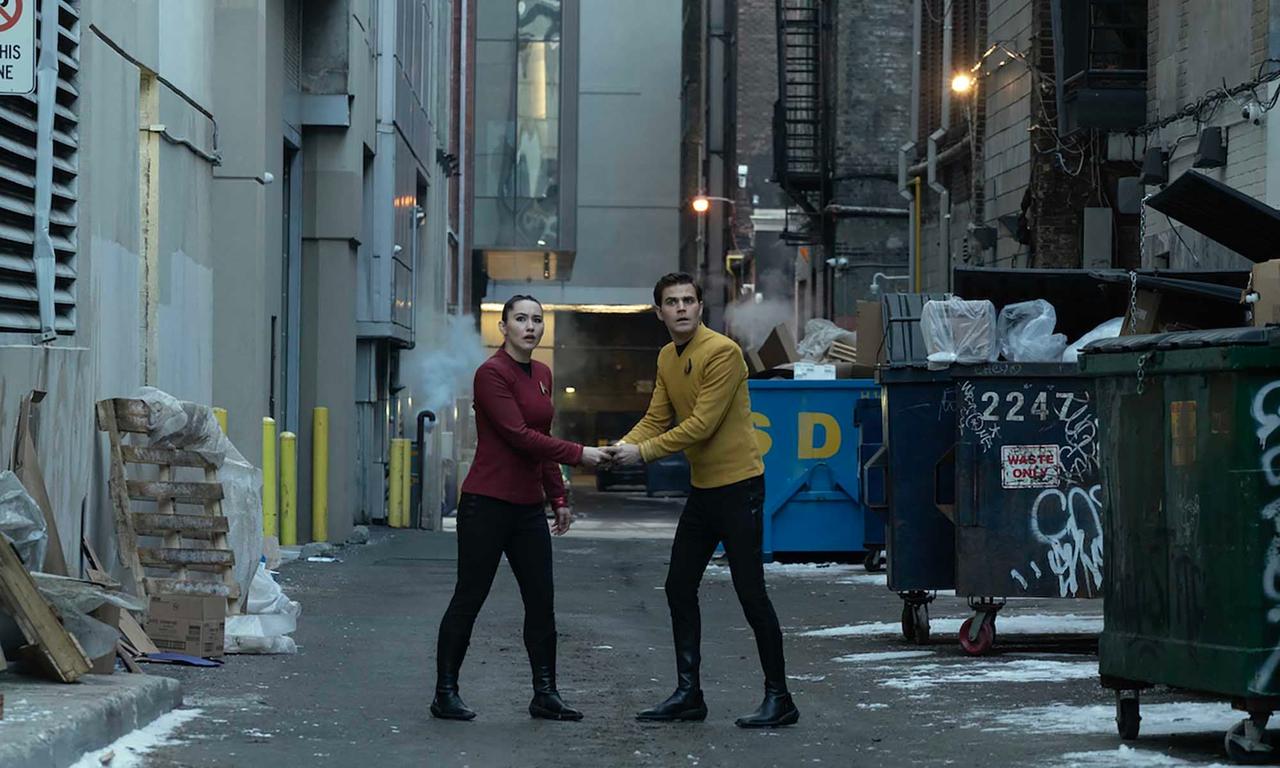
The mechanics of time travel in the Star Trek franchise were raised in Strange New Worlds season 2 episode 3, 'Tomorrow and Tomorrow and Tomorrow.' In this episode, La’An Noonien-Singh (Christina Chong) and a parallel timeline version of James T. Kirk (Paul Wesley) travel back in time to the 2020s. There, they meet Sera (Adelaide Kane).
Eventually Sera is revealed to be a Romulan spy from the future. In dialogue, she states that she was sent back in time to prevent the rise of Khan Noonien Singh (Ricardo Montalban). According to Sera, a Romulan-constructed computer calculated that preventing the rise of Khan would prevent the formation of the Federation. These consequences are glimpsed when La’An visits parallel Kirk’s timeline in the cold opening and first act of 'Tomorrow and Tomorrow and Tomorrow.'
Sera reveals that the rise of Khan was meant to transpire in the 1990s. This comports with the timeline established in the TOS season 1 episode 'Space Seed,' which first introduced Khan. However, she further states that the side effects of time travel, including multiple “temporal wars” (see: Enterprise seasons 1 and 2 for one example), have caused unpredictable alterations to the timeline. In spite of these changes, she continues that certain persistent events seem to resist attempts to prevent them from happening. This includes the rise of Khan, which 'Tomorrow and Tomorrow and Tomorrow' now suggests takes place in the 2030s rather than the 1990s.
Alterations to the timeline could therefore explain some of the apparent narrative inconsistencies across the various incarnations of the Star Trek franchise. This could include aesthetics, providing an explanation as to why the Enterprise on Strange New Worlds looks more advanced than the same ship on The Original Series. Likewise, it could explain why certain characters seem to 'forget' key information later on in the timeline. In early iterations, perhaps they remained ignorant.
In both cases, these inconsistencies have practical, real-world explanations: with better visual effects the Enterprise looks better, and when it comes to an expansive ongoing narrative like Star Trek, retcons of various degrees will eventually become inevitable. However, the revelation that Trek’s timeline is not fixed but rather evolving offers an in-canon explanation for these practical considerations.
There is an additional implication to be taken into account regarding the insight into time travel afforded by 'Tomorrow and Tomorrow and Tomorrow.' Because alterations to the timeline are possible, the 'known fates' of characters like Spock may not be as inevitable as they once seemed. However, in spite of this, said events still may prove unavoidable, as demonstrated by Pike’s fate in the SNW season 1 finale, 'A Quality of Mercy'.
It’s also worth noting that time travel may occur off screen in the Star Trek franchise. For example, in the Deep Space Nine episode 'Troubles and Tribble-ations', Department of Temporal Investigations agent Dulmur (Jack Blessing) states that Kirk was guilty of 17 temporal violations. It is likely that some of these violations occurred during time travel adventures that have not yet been (or may never be) directly addressed by the narrative.
Another example of off-screen time travel can be found in Lower Decks season 1’s 'Cupid’s Errant Arrow', in which it is implied that the Vancouver has previously undertaken multiple off-screen time travel missions to the 20th century. Considering the potential number of off-screen time travel missions makes the potential elasticity of the Trek timeline come into focus.
Do I need to watch Star Trek: Enterprise first?
The short answer is: no. While it is a prequel, Star Trek: Enterprise draws heavily from the shows that preceded it. For this reason, it may actually be a more challenging to begin with Enterprise rather than one of the other shows.
Other shows that more heavily rely on preceding stories include Star Trek: The Animated Series, Star Trek: Picard, Star Trek: Lower Decks, and Star Trek: Short Treks.
What Star Trek show or movie should I start with?

There are several Star Trek shows that are ideal for newcomers. While The Original Series works well enough, it naturally carries the aesthetic and narrative sensibilities of the 1960s. If this is alienating, later Trek series may serve as a better point of ingress. Furthermore, many Trekkies cite Star Trek II: The Wrath of Khan as an excellent point of entry into the franchise, even if it is technically a sequel to the The Original Series episode 'Space Seed'.
While DS9 and Voyager are spinoffs of The Next Generation, any of the three could serve as an introduction to the Franchise. If one of the captains or crews is particularly appealing, leaning into the preference can indicate the best starting point. If you are already a fan of the 1990s Trek era and are looking for a re-entry point, the aesthetic and philosophy of the TNG time period continue on Lower Decks, set just after Nemesis. Meanwhile, Picard carries many of the storylines from those shows into the 25th Century.
Several of the shows from the Paramount+ streaming era are designed to be welcoming to new viewers. The series that launched the current era, Discovery, can serve as an excellent entry point to the franchise. Meanwhile, Star Trek: Prodigy intentionally introduces the tropes of Trek to potentially unfamiliar viewers of all ages. And while SNW may follow a cast that includes returning characters and creatures, its episodic nature and optimistic energy certainly have the potential to capture the attention of new audience members, as well.
What’s the difference between the Trek movies and Star Trek shows?

With the exception of the three movies in the Kelvin timeline, the Trek movies and the Trek shows take place on the same timeline. However, as a general rule, the movies tend to be more action oriented than their small-screen counterparts. Nevertheless, the events of the movies are included in Trek television continuity.
For an illustration of how the sensibilities of Trek movies depart from the sensibilities of Trek shows, see Lower Decks season 1’s 'Crisis Point' and season 3’s 'Crisis Point 2: Paradoxus.'
Technically, the Kelvin timeline movies are connected to the prime Trek timeline, if we assume that the elder Spock who appears in them does indeed possess continuity with the Spock of The Original Series, The Animated Series, The Next Generation, and The Original Series crew movies. However the Kelvin movies otherwise exist in a parallel continuity to the prime Trek timeline. Aside from some Easter eggs, the Kelvin timeline is not currently more directly connected to the prime Trek timeline. Nevertheless, some Trekkies are big fans of the relatively self-contained reimagining of TOS that takes place in these three movies.
What is the next Star Trek show or movie to come out?
At the moment, there is only one ongoing Star Trek series, which is Star Trek: Strange New Worlds. The first two episodes of Star Trek: Strange New Worlds season three debuted on July 17, 2025, with weekly episodes coming each week after that. The final episode of this season will stream on September 11, 2025.
Thankfully, that isn't the end of the show. Star Trek: Strange New Worlds has its fourth season set to air sometime in 2026 and a fifth (and final) season has been greenlit as well. That means we have at least three more seasons of Star Trek: Strange New Worlds coming in the near future.
Space may be the final frontier, but there's no end to Popverse's love of the Star Trek universe. Hop aboard the starship Enterprise with our Star Trek watch order, explore strange new worlds with our upcoming Star Trek TV shows and movies list, seek out the new life of the franchise, and boldly go where no Star Trek film has ever gone before - with Quentin Tarantino?
Follow Popverse for upcoming event coverage and news
Find out how we conduct our review by reading our review policy
Let Popverse be your tour guide through the wilderness of pop culture
Sign in and let us help you find your new favorite thing.




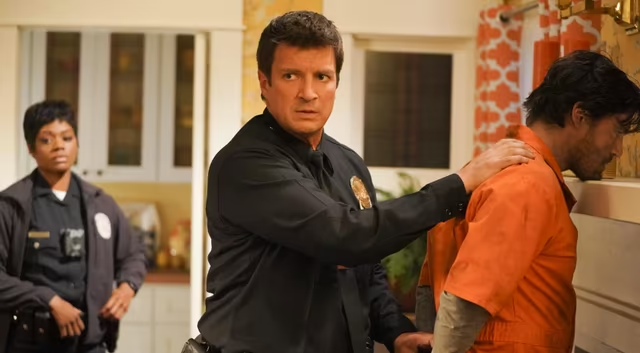
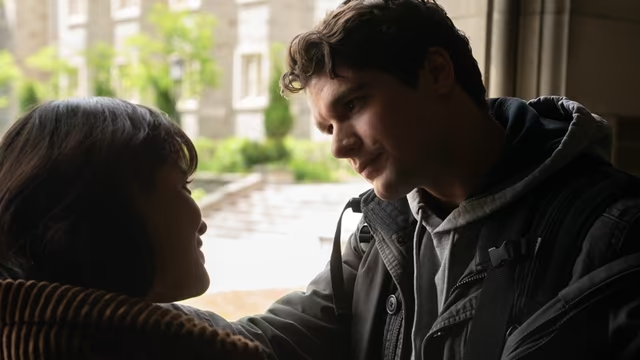
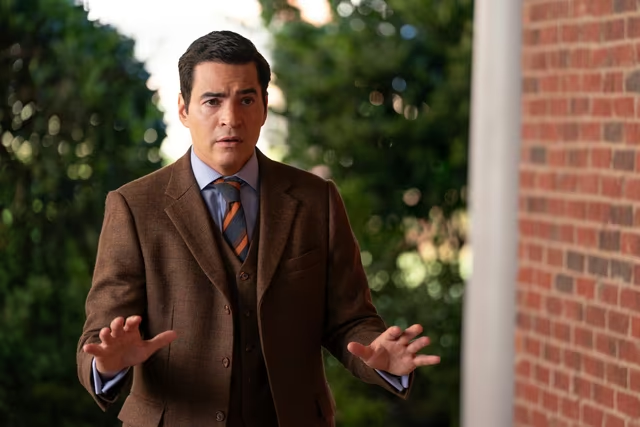
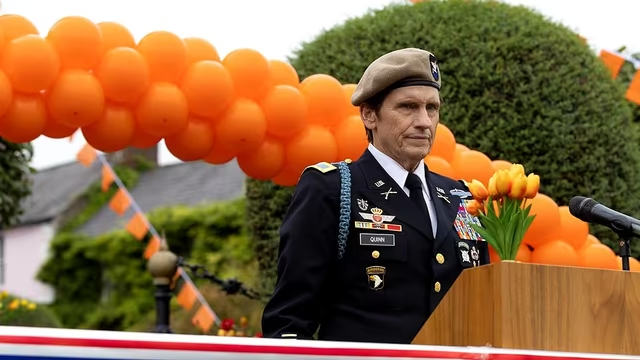
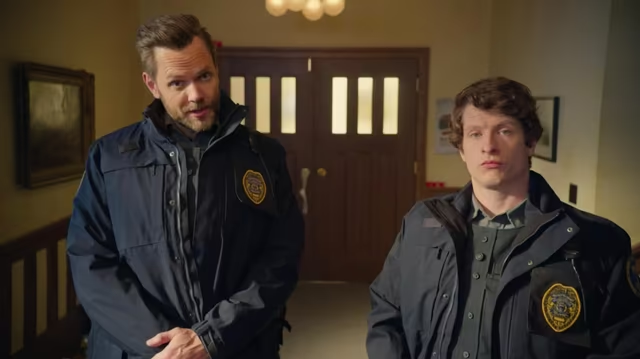
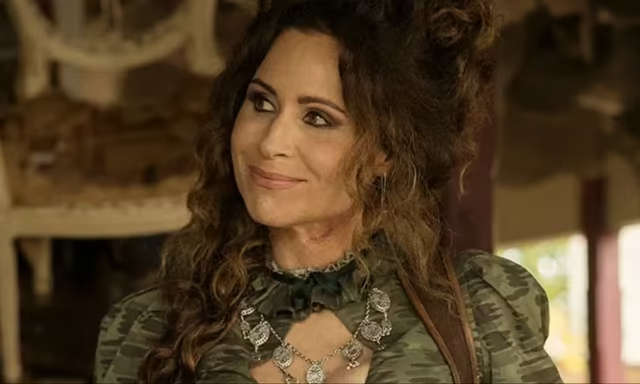






Comments
Want to join the discussion? Please activate your account first.
Visit Reedpop ID if you need to resend the confirmation email.